What are the Teaching Tools?

Creating Teaching Tools for Young Children with Challenging Behavior (Teaching Tools) gives teachers practical strategies, developed from research activities and experiences in Positive Behavior Support, to create a plan for supporting young children who are having challenging behavior.
The Teaching Tools provide:
- Easily accessible ideas and materials such as handouts, worksheets, techniques, strategies, and visuals to support children in the classroom and other learning environments
- Ideas of effective intervention approaches for children who do not need a functional assessment to determine the function of the child’s problem behavior or a team-based process to address persistent challenging behavior.
How are the Teaching Tools Organized?
The Teaching Tools are organized around the User’s Manual which explains how to use the tools and provides all of the technical information you need to access the hyperlinked visual supports and materials. Also included within the Teaching Tools is the Routine Based Support Guide. The Guide is a document that accompanies all of the tools and is organized in routines and activities that typically occur in early childhood programs. It assists teachers in developing a support plan.
Tools For Toddlers
The Teaching Tools routine-based guide includes prevention, intervention, and response strategies that might be used to support toddlers with challenging behavior. The manual includes sections on using TTYC with toddlers, a decision tree, forms for teaming, tips for consultation to the classroom, and guidance on assessing implementation and outcomes. The development of these strategies was supported by The Center for Early Childhood Mental Health Consultation, grant number 90YD0268, funded by the Office of Head Start, Administration for Children, Youth and Families, U.S. Department of Health and Human Services.
Teaching Tools
The User’s Manual provides you with an overview of the entire contents of the Teaching Tools. This manual presents the steps you will take to use the Teaching Tools materials.
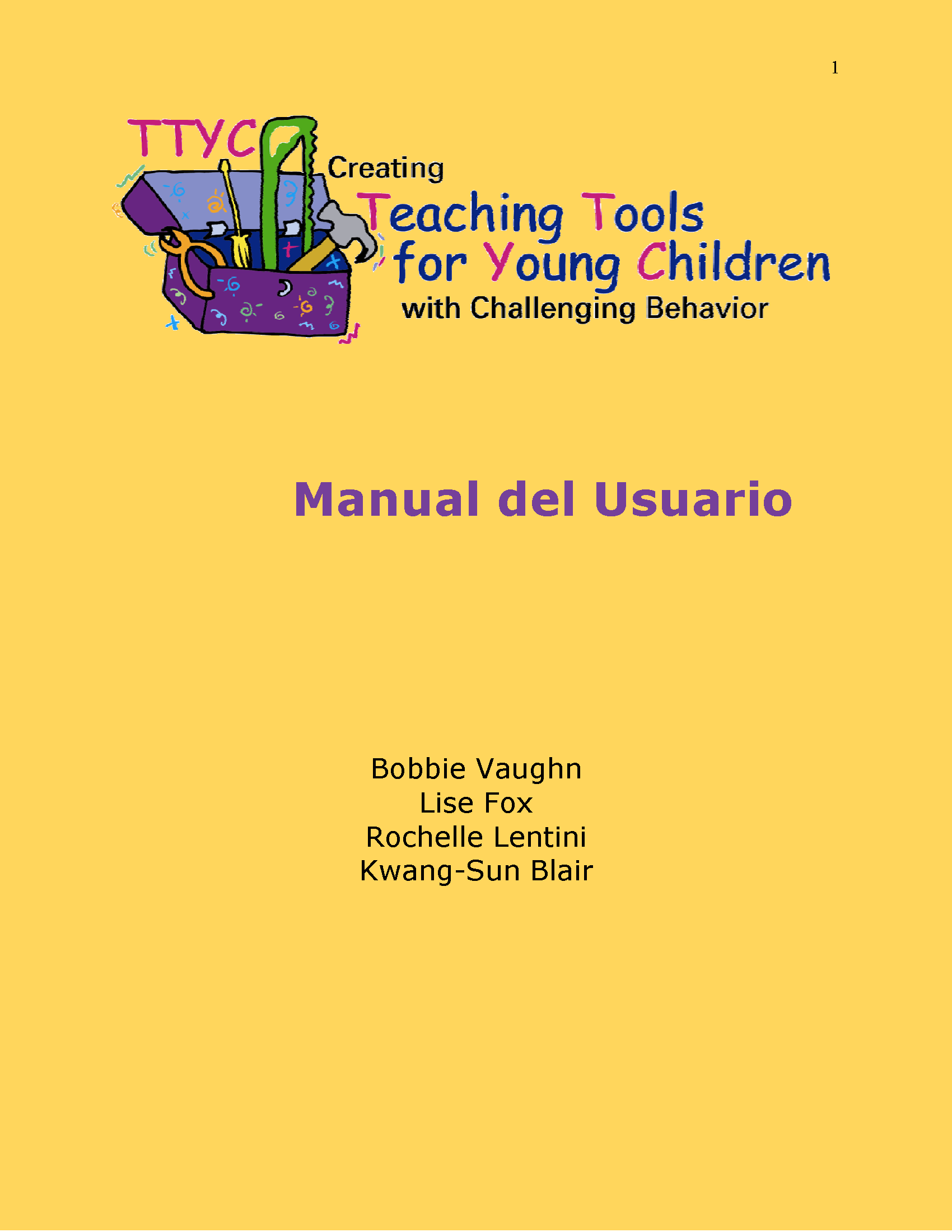
Manual to use TTYC (Spanish)
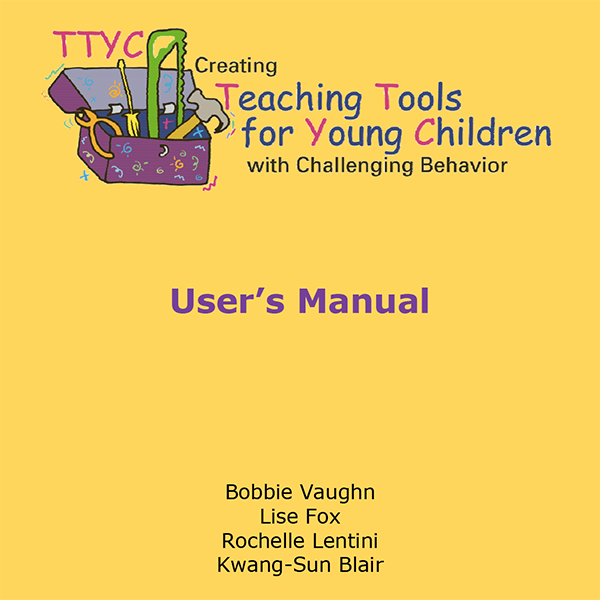
The “Getting Started” guides, tips, and forms assist with the first steps in supporting young children with challenging behavior. They offer ideas for establishing a good foundation in the classroom, gathering information, selecting strategies, and generating a support plan.
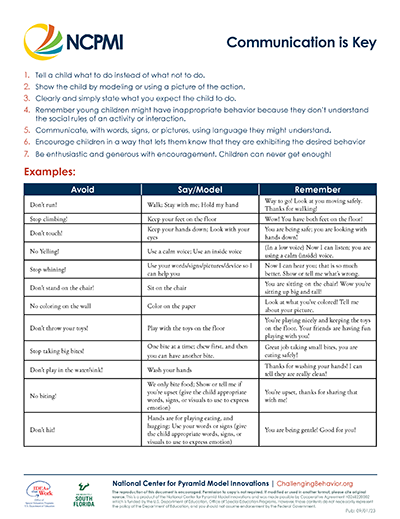
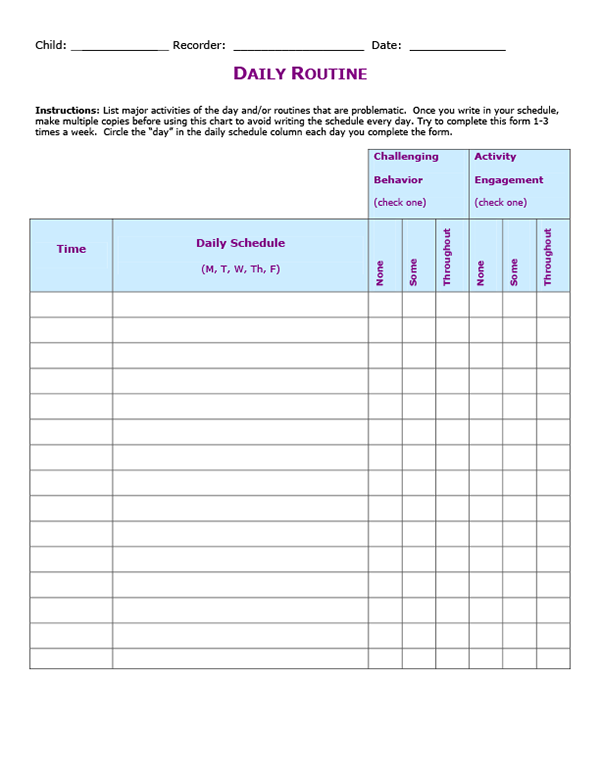

Checklist to identify events and functions
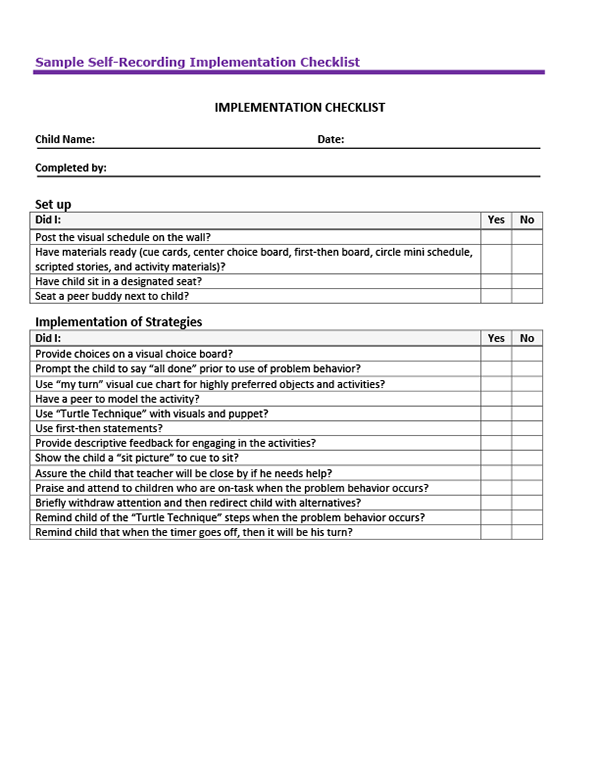
You might also want to develop a way to help the teacher with implementation fidelity. Check out this approach to using a data-based system for tracking implementation fidelity. The process involves identifying all the plan steps and then taking data on implementation.

Checklist of child strengths and challenges for teachers to use
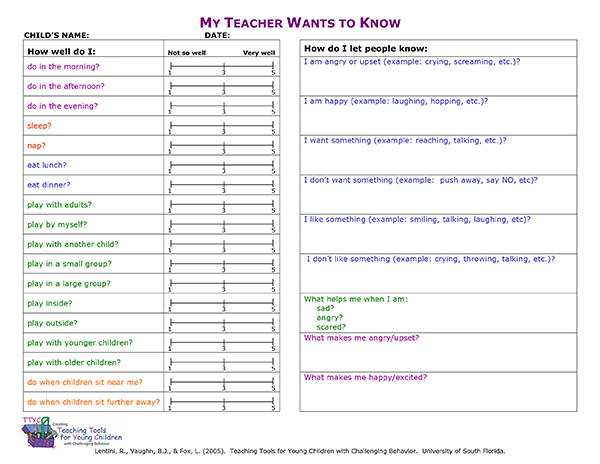
Checklist families can use to provide information about the child to the teacher
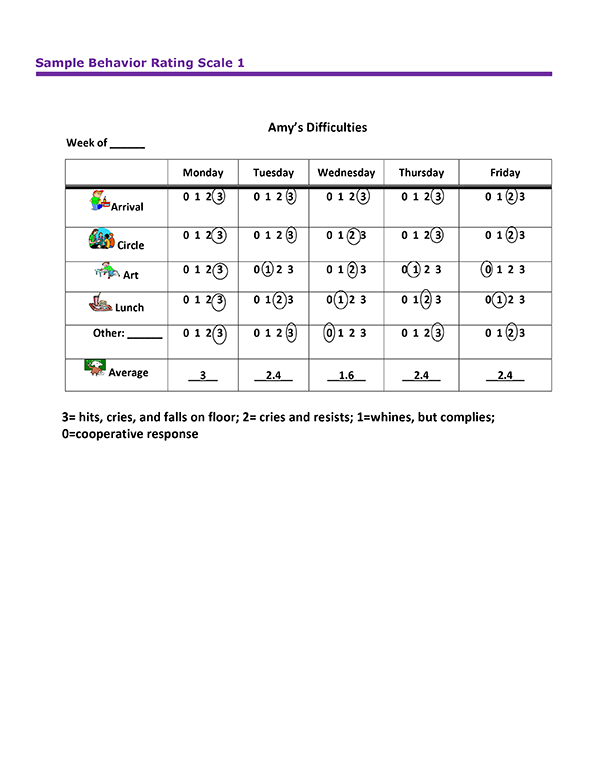
Sample for using a rating scale for progress monitoring
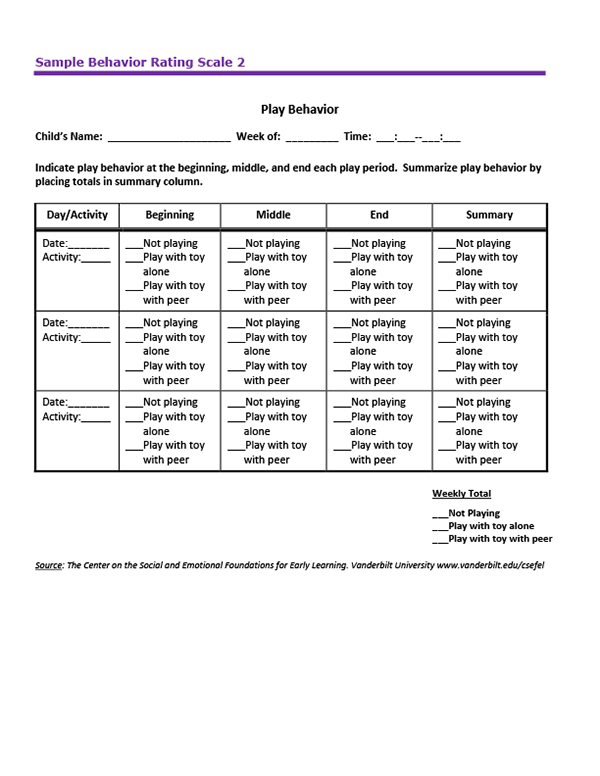
Sample for using a rating scale for progress monitoring
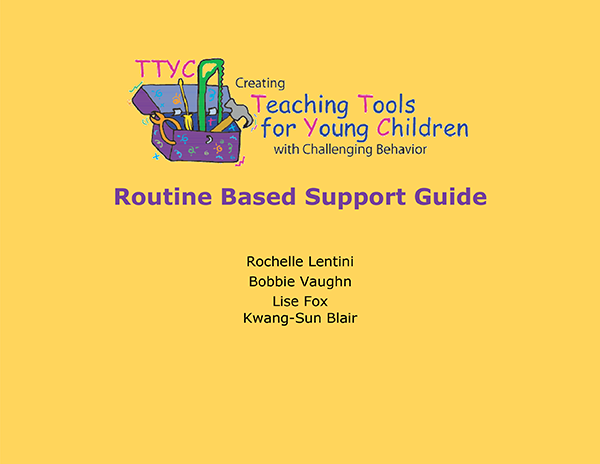

Guide used in TTYC to identify strategies (Spanish)
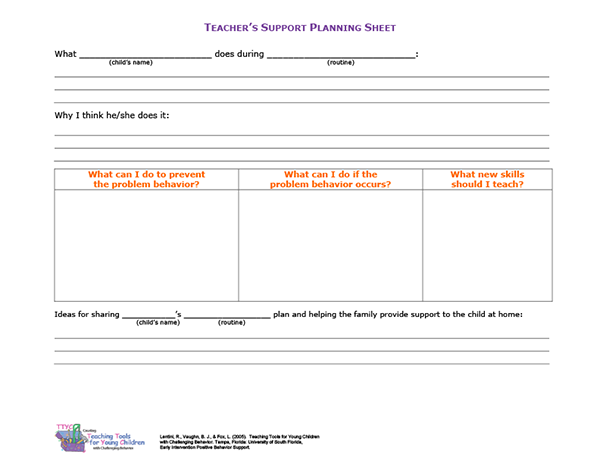

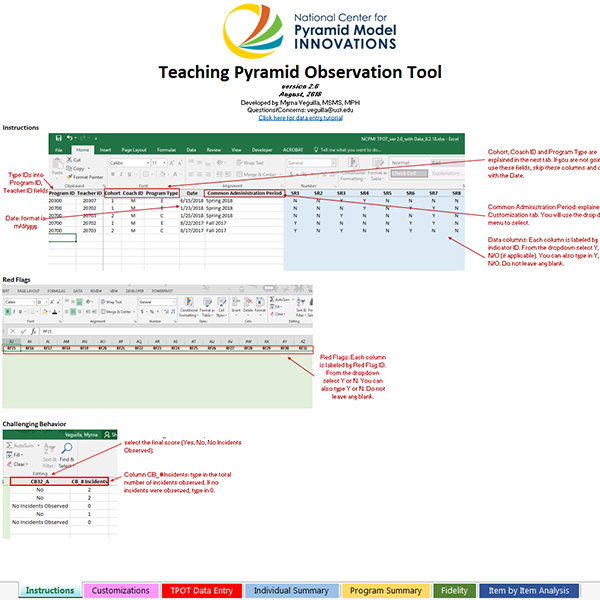
The TPOT™ Excel Scoring Spreadsheet is a tool for summarizing and graphing TPOT data. This spreadsheet allows you to enter data for an unlimited number of teachers and has the added functionality of looking at data by indicator.

The TPOT™ Excel Scoring Excel workbook version 3.0 is a tool for summarizing and graphing TPOT data.
The Buddy System tip sheet and article about peer buddies provide ideas for using a peer buddy system to support the child with challenging behavior while adjusting to the new setting.
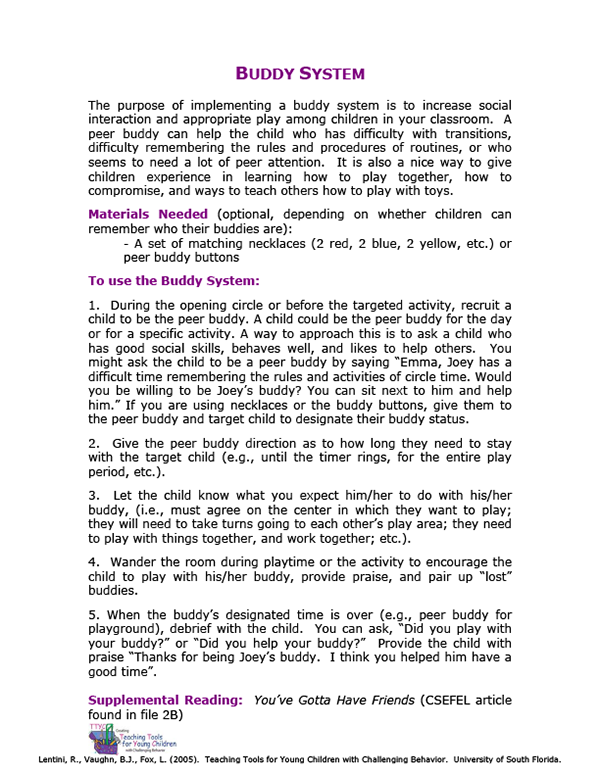
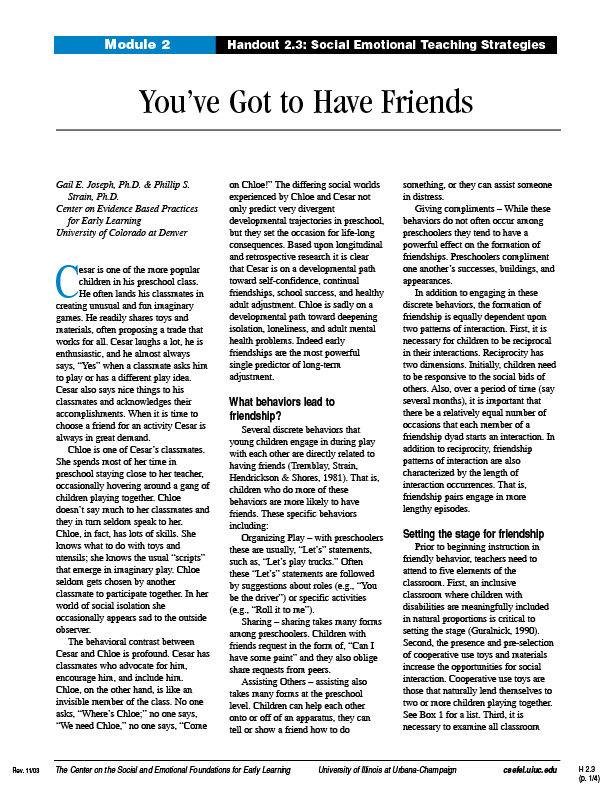
The Teacher Tools folder contains visual representation for common classroom rules and small, medium and large stop signs for helping children know what areas are off limits.

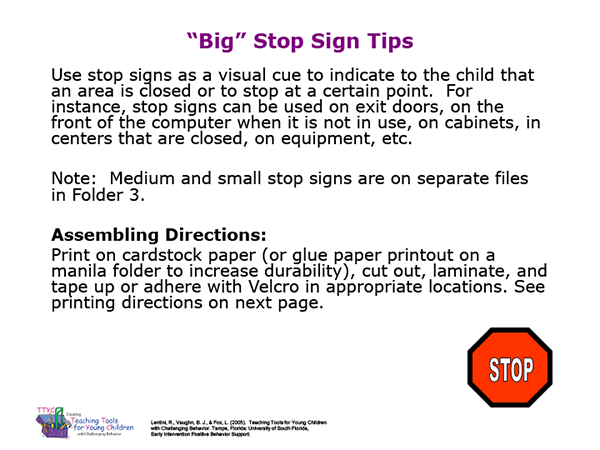


The Turtle Technique is a method of teaching young children strategies for coping with anger, disappointment, and frustration. This folder contains an article about anger control, visuals (small and large) for the turtle technique steps, and a scripted story.
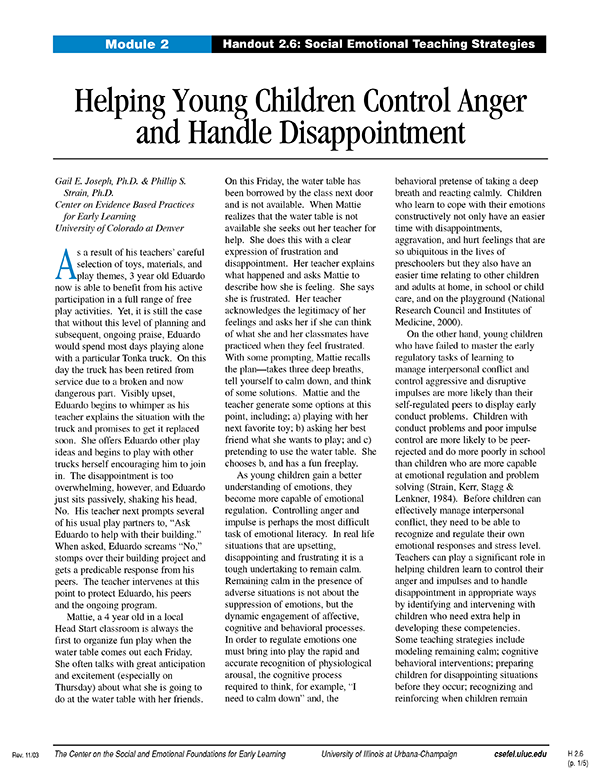
Practical strategies article
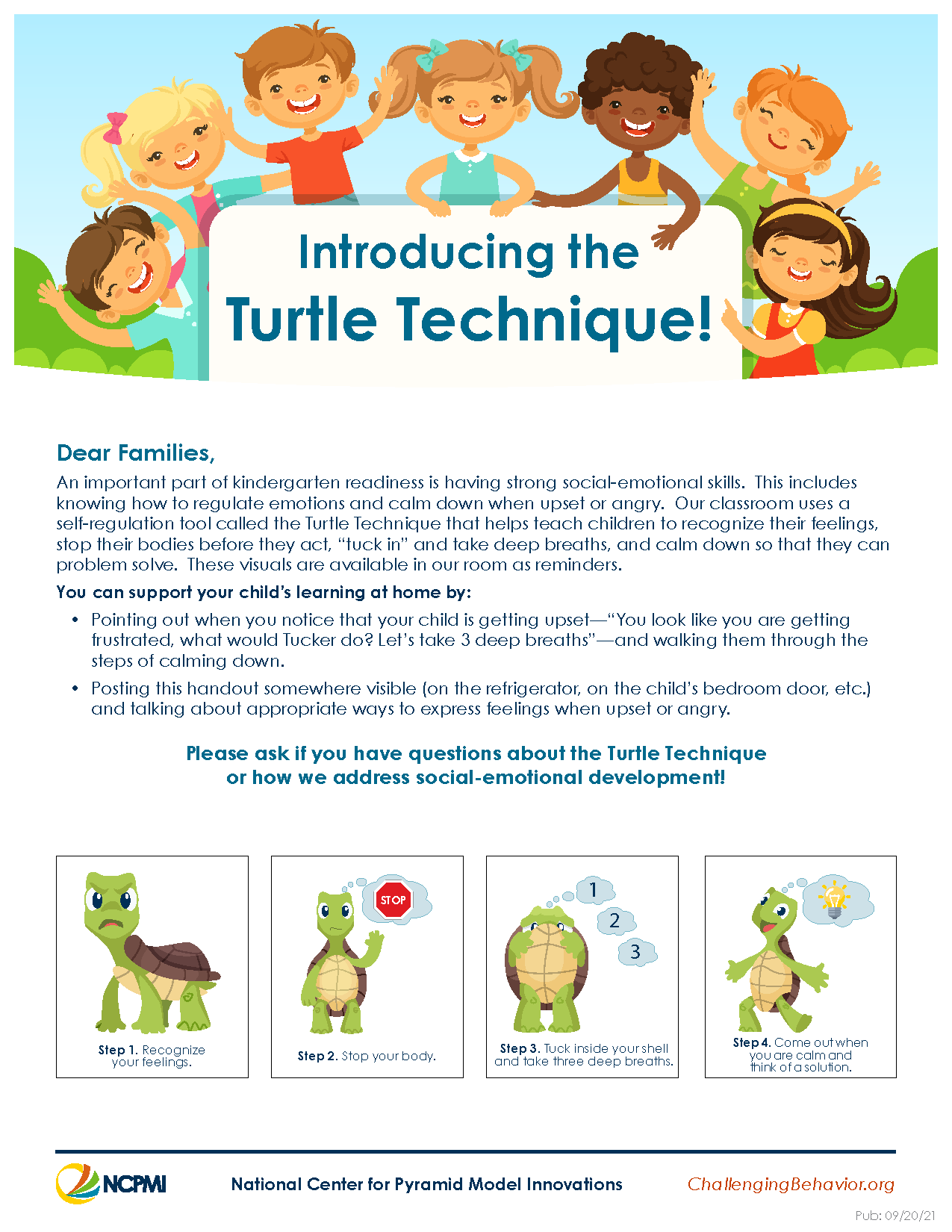
Letter addressed to families announcing the use of the the Turtle Technique at the program.

Letter addressed to families announcing the use of the the Turtle Technique at the program.
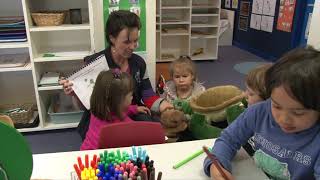
Child is coloring a picture of a turtle and the teacher takes the opportunity to teach an impromptu lesson on Tucker the Turtle.


(Técnica de la tortuga) Turtle technique cards for teaching in Spanish
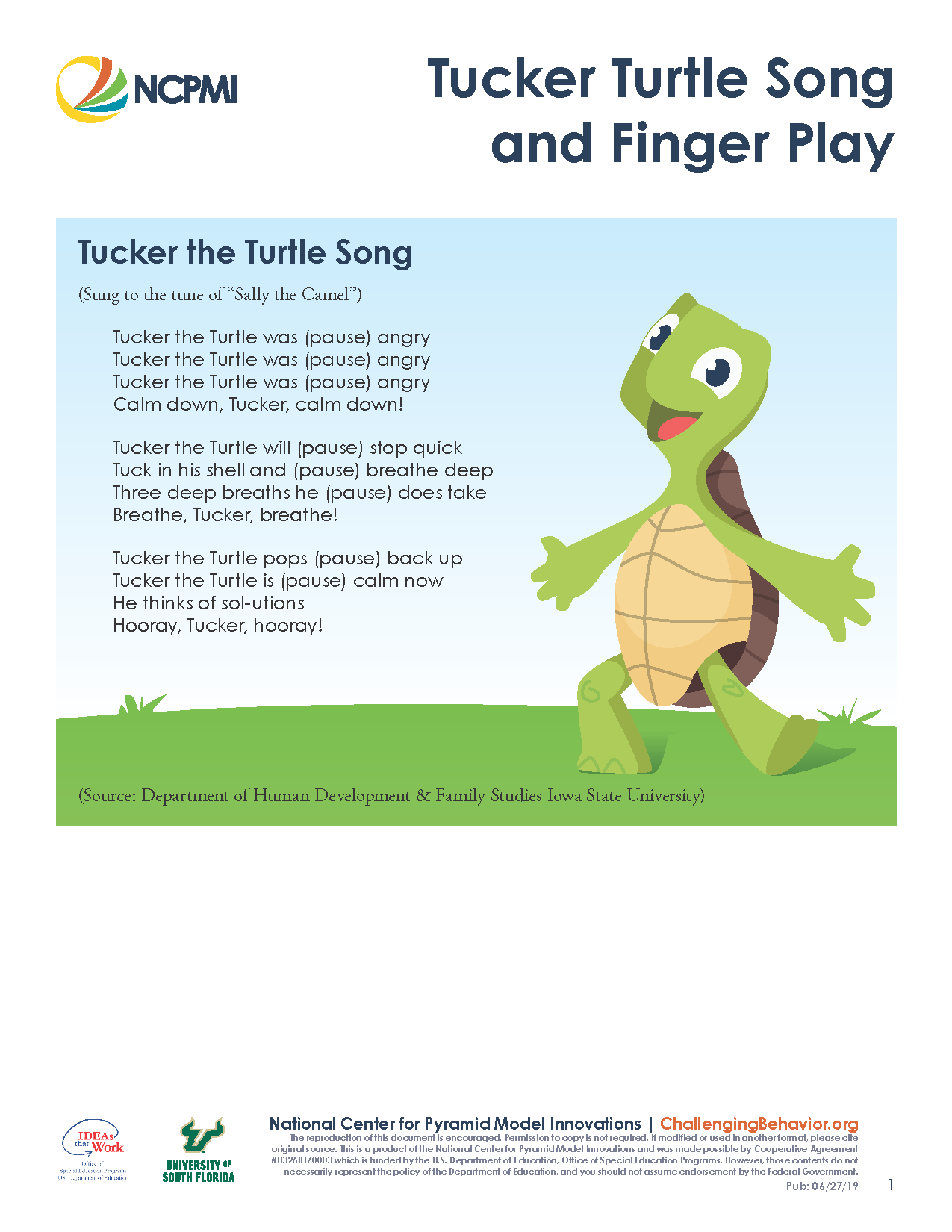
Song and finger play to reinforce teaching the Turtle Technique to children.
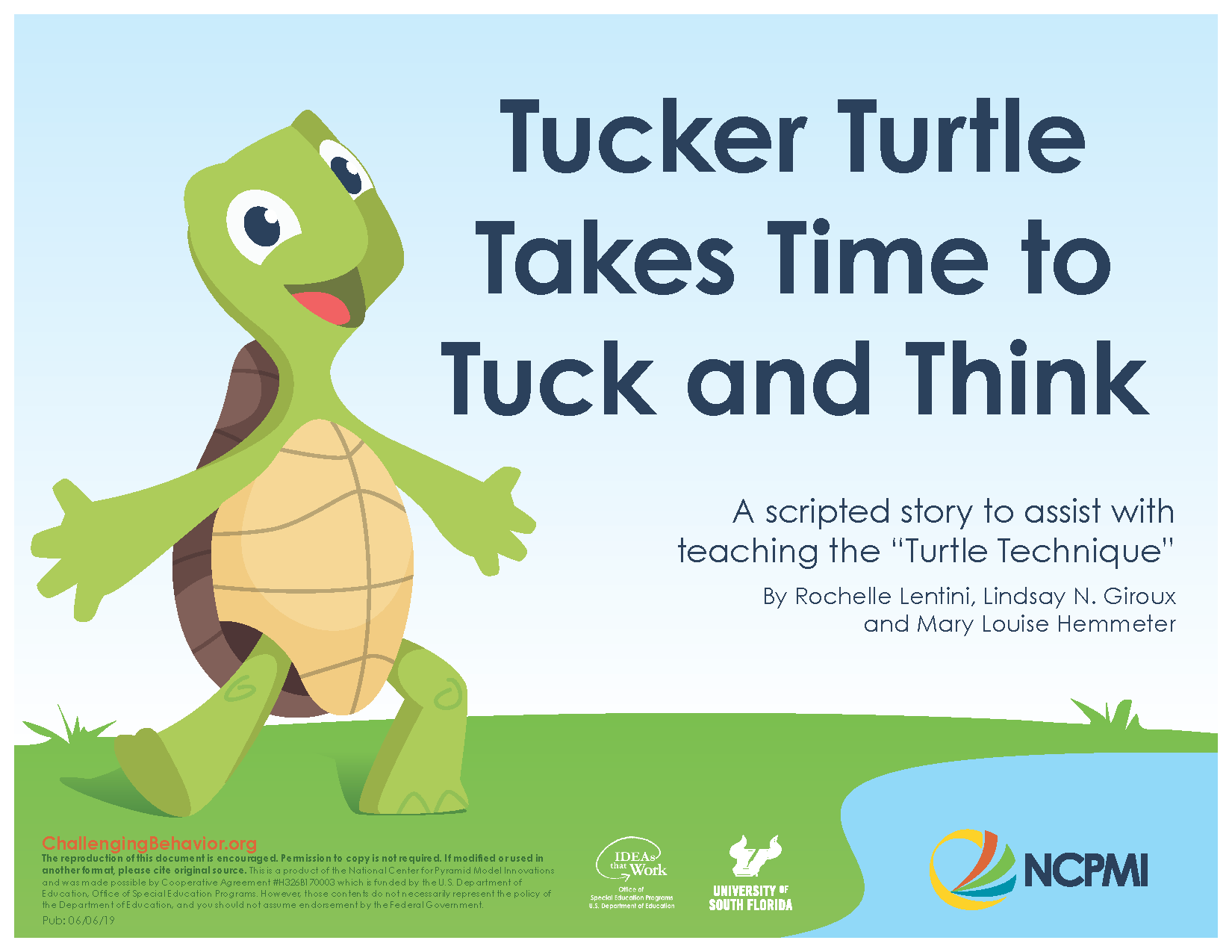
Tucker the Turtle provides a scripted story to teach young children how to calm down when they have strong feelings by tucking into their shell and taking deep breaths. The story also includes visuals to help children learn how to use the strategy.?
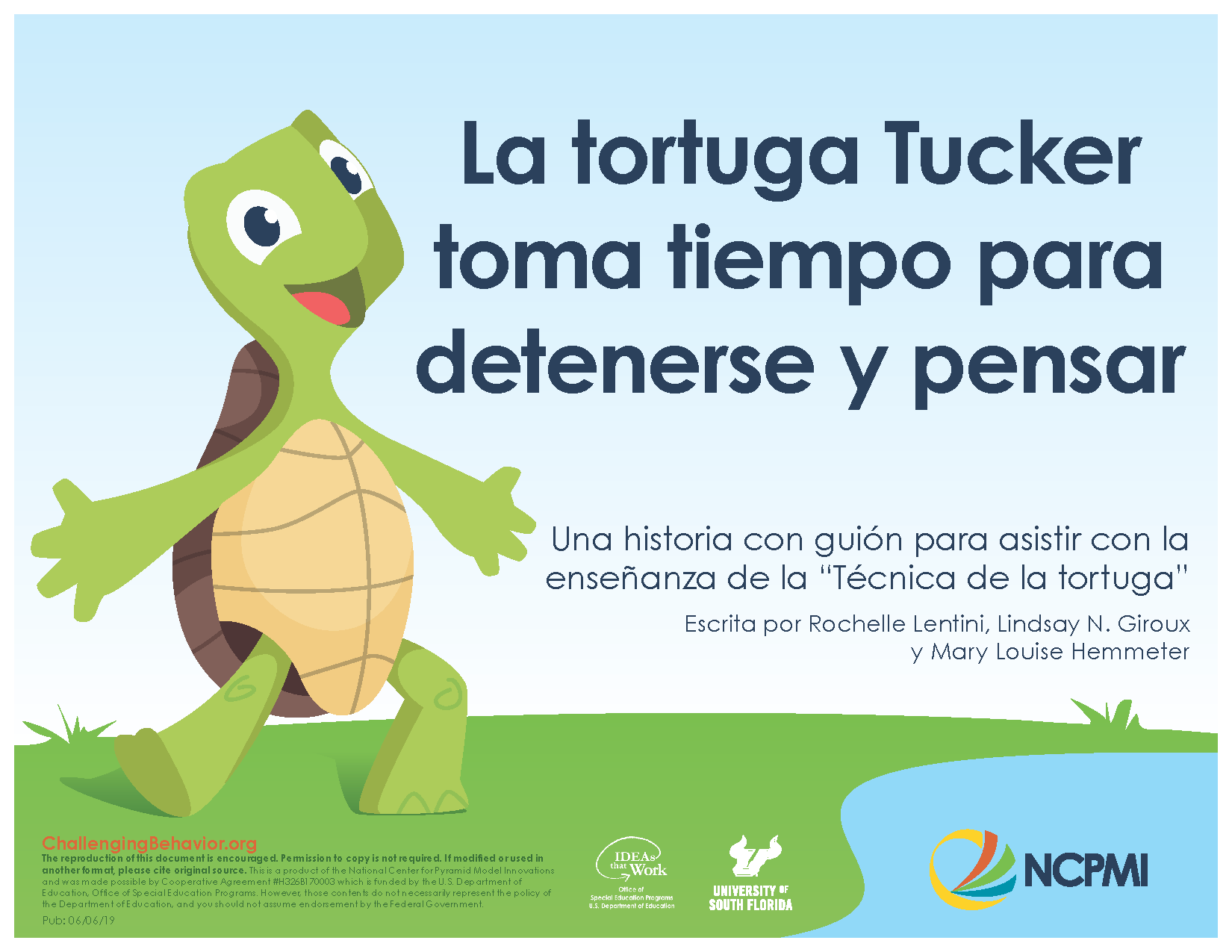
(La tortuga Tucker toma tiempo para detenerse y pensar) Tucker the Turtle provides a scripted story to teach young children how to calm down when they have strong feelings by tucking into their shell and taking deep breaths. The story also includes visuals to help children learn how to use the strategy.

Tucker the Turtle provides a scripted story to teach young children how to calm down when they have strong feelings by tucking into their shell and taking deep breaths. The story also includes visuals to help children learn how to use the strategy.

Tucker the Turtle provides a scripted story to teach young children how to calm down when they have strong feelings by tucking into their shell and taking deep breaths. The story also includes visuals to help children learn how to use the strategy.
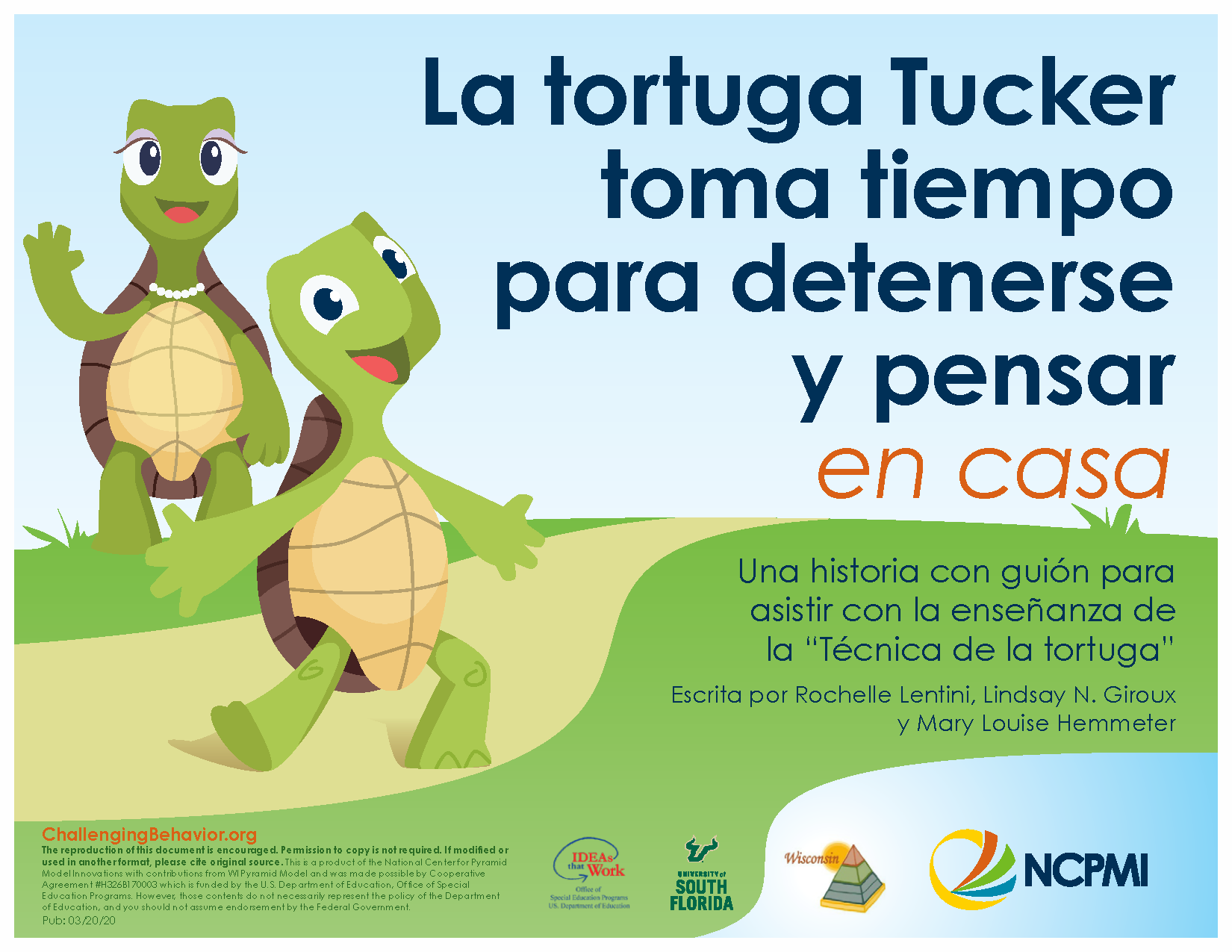
Tucker the Turtle provides a scripted story to teach young children how to calm down when they have strong feelings by tucking into their shell and taking deep breaths. The story also includes visuals to help children learn how to use the strategy.
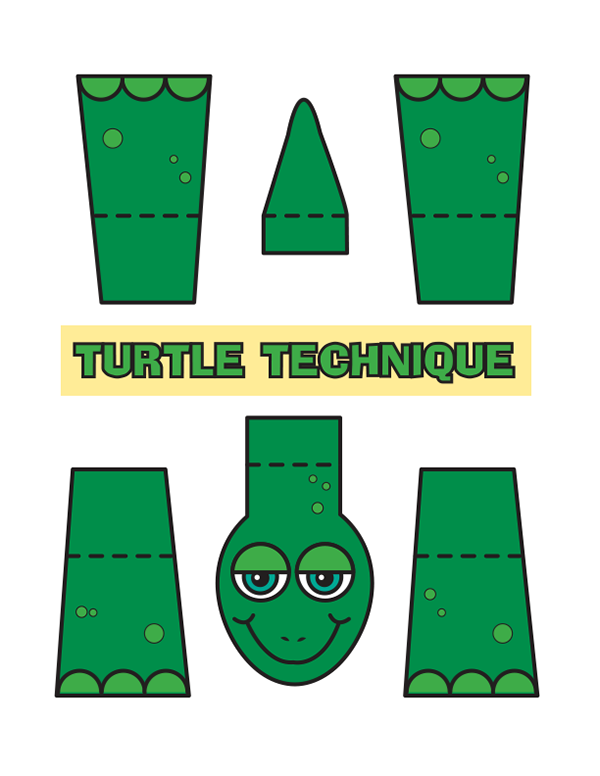
This folder begins with the How to Make a Visual Schedule tip sheet, a rationale and key points for using the visual strategies. In addition, there are visual schedules, choice boards, cue cards, and activity sequences. A variety of pictured examples are provided to help teachers develop their own visual supports.

Materials to make for child support
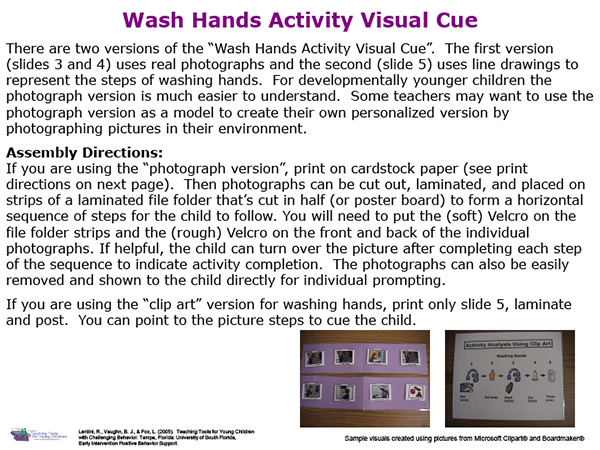
Materials to make for child support
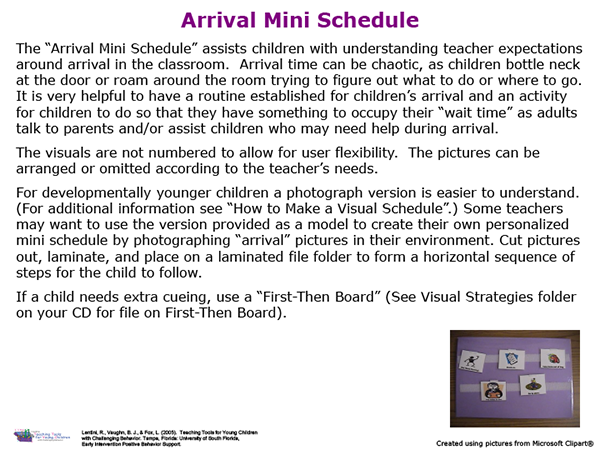
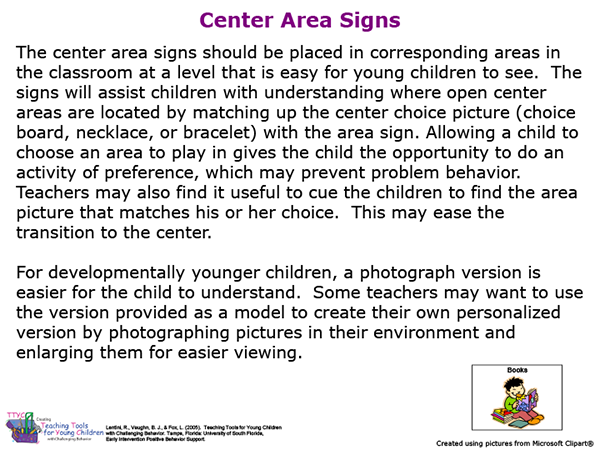
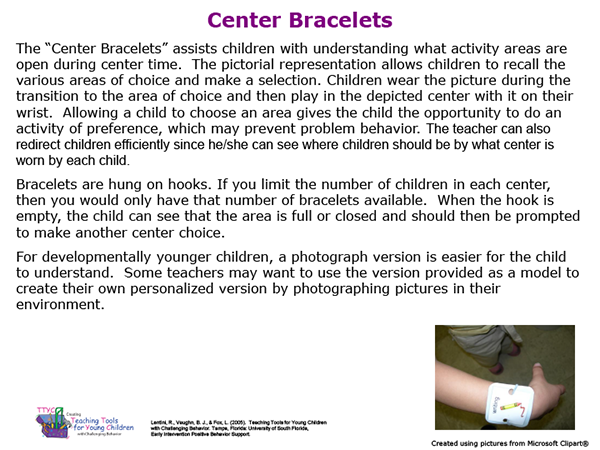
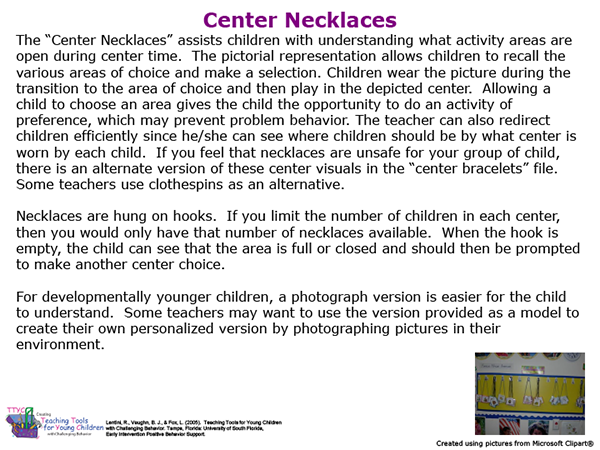

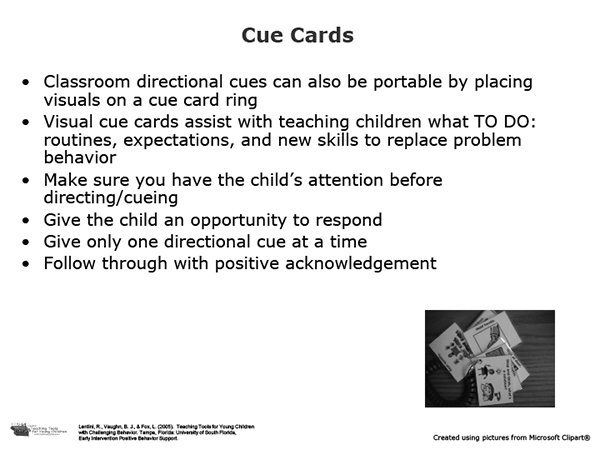
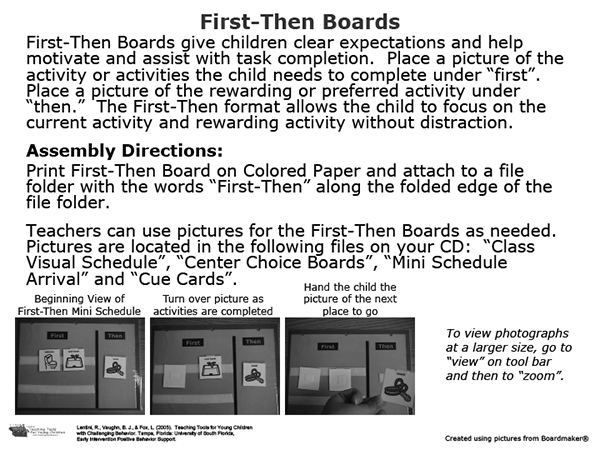

Instructions for making a visual schedule
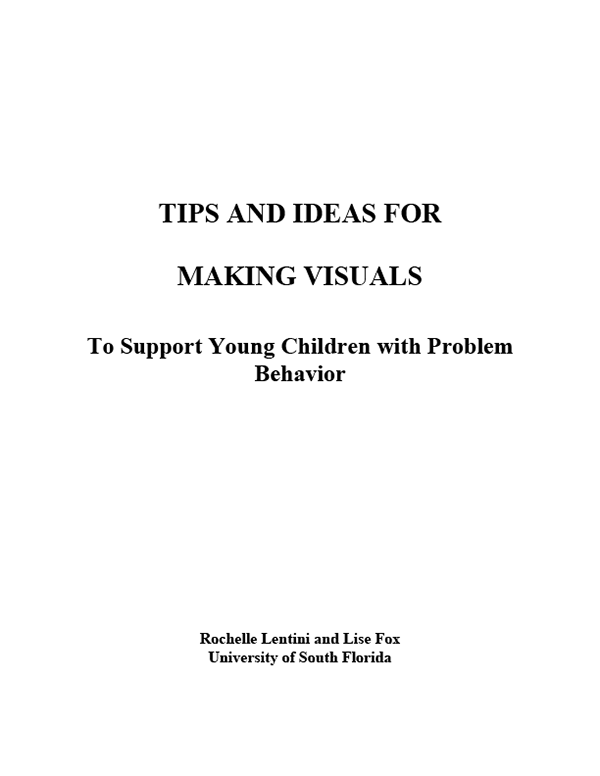
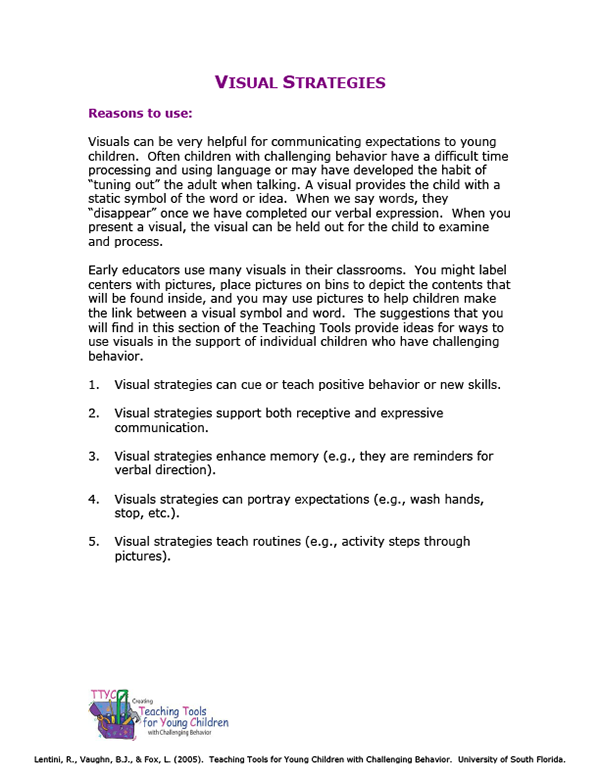
This folder contains Scripted Story Tips. Scripted stories help children understand a social situation by describing the situation, what the child needs to do, and how others feel when the child exhibits the inappropriate behavior or desired behavior.
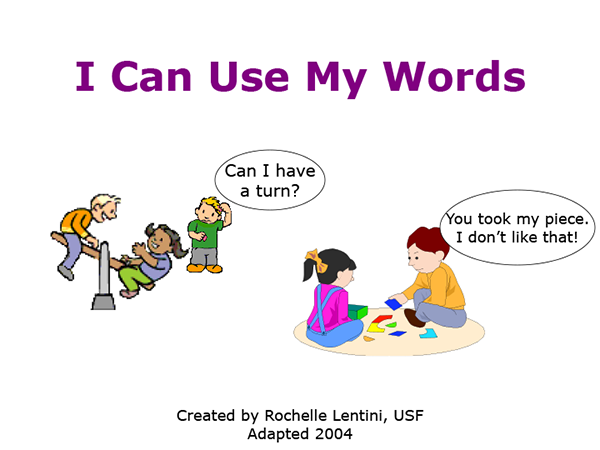
Scripted Stories for Social Situations help children understand social interactions, situations, expectations, social cues, the script of unfamiliar activities, and/or social rules.

Scripted Stories for Social Situations help children understand social interactions, situations, expectations, social cues, the script of unfamiliar activities, and/or social rules.

Scripted Stories for Social Situations help children understand social interactions, situations, expectations, social cues, the script of unfamiliar activities, and/or social rules.

Scripted Stories for Social Situations help children understand social interactions, situations, expectations, social cues, the script of unfamiliar activities, and/or social rules.

Scripted Stories for Social Situations help children understand social interactions, situations, expectations, social cues, the script of unfamiliar activities, and/or social rules.

Scripted Stories for Social Situations help children understand social interactions, situations, expectations, social cues, the script of unfamiliar activities, and/or social rules.

Scripted Stories for Social Situations help children understand social interactions, situations, expectations, social cues, the script of unfamiliar activities, and/or social rules.
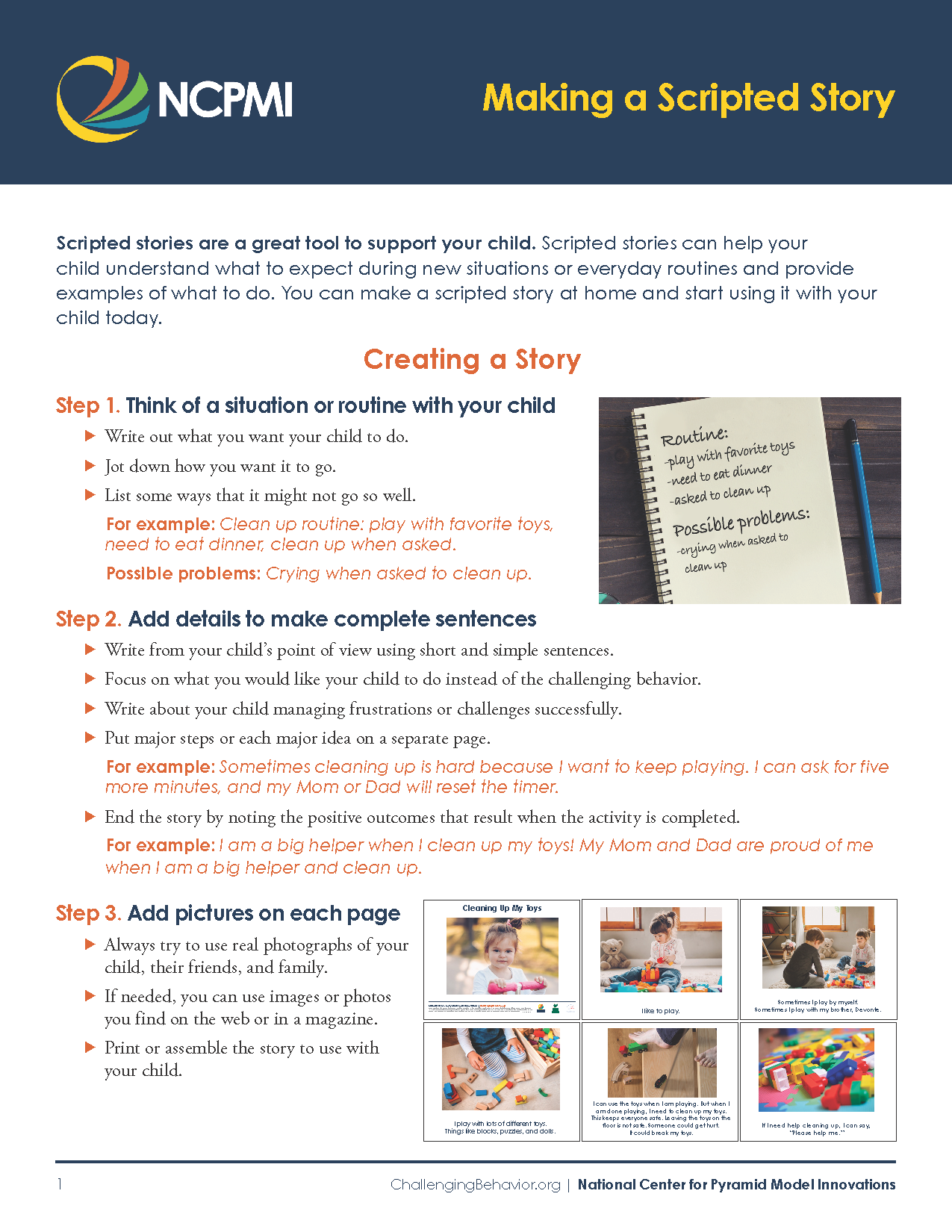
This tipsheet contains suggestions on how to develop and use scripted stories at home.
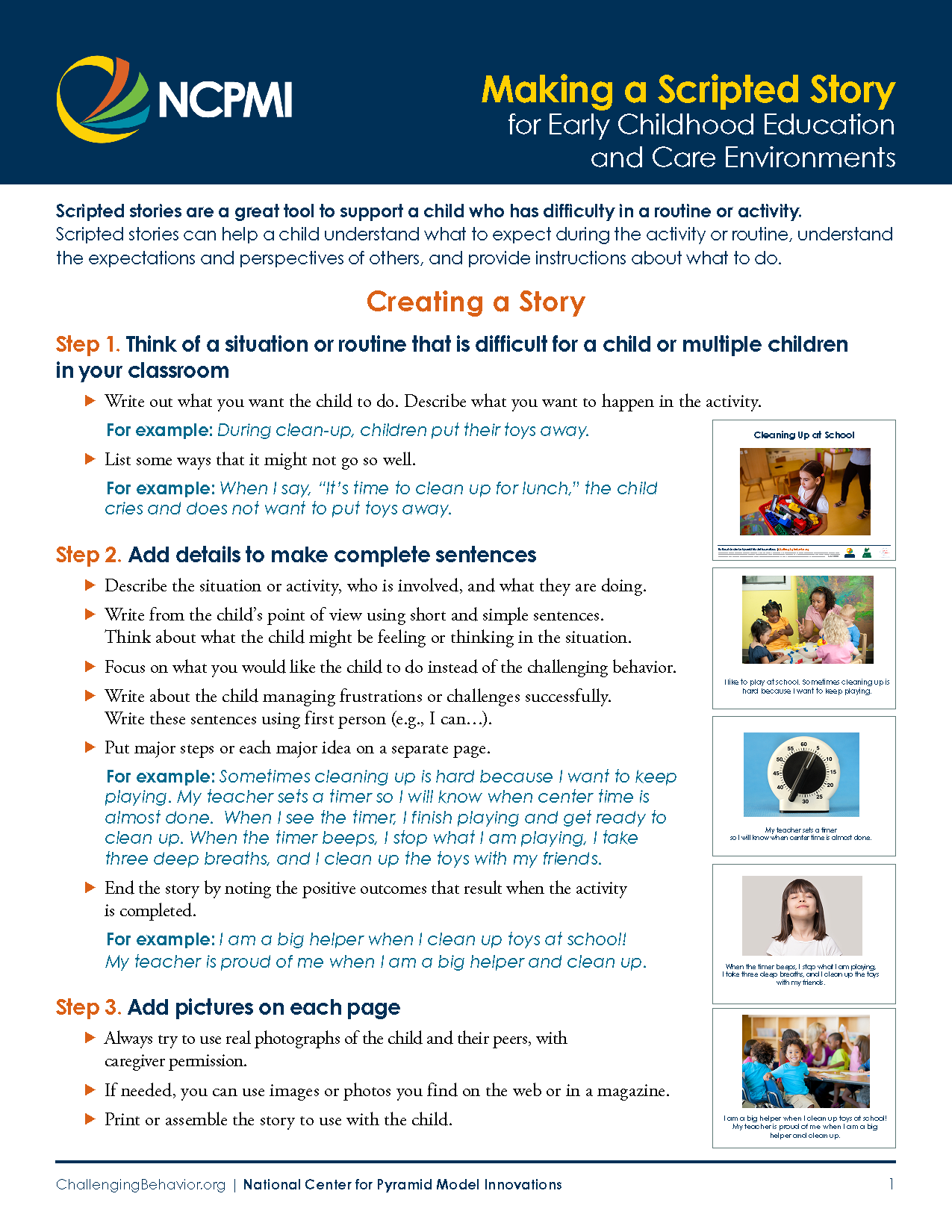
This tipsheet contains suggestions on how to develop and use scripted stories.

Scripted Stories for Social Situations help children understand social interactions, situations, expectations, social cues, the script of unfamiliar activities, and/or social rules.
The Circle Time folder focuses on visual strategies for helping children understand circle time. This folder includes a scripted story about circle time, rules for circle, and a mini schedule for understanding and predicting the activities of circle time.



Scripted Stories for Social Situations help children understand social interactions, situations, expectations, social cues, the script of unfamiliar activities, and/or social rules.
The Feeling Vocabulary folder contains an article about enhancing young children’s emotional vocabulary. The article provides a variety of strategies to support children around the notion of appropriately expressing feelings. Some of the ideas discussed in the article are provided to you in the files within this folder: visuals depicting a variety of emotions, a feeling wheel, and a feeling chart. The feeling visuals can prompt appropriate emotional expression.

Practical strategies article
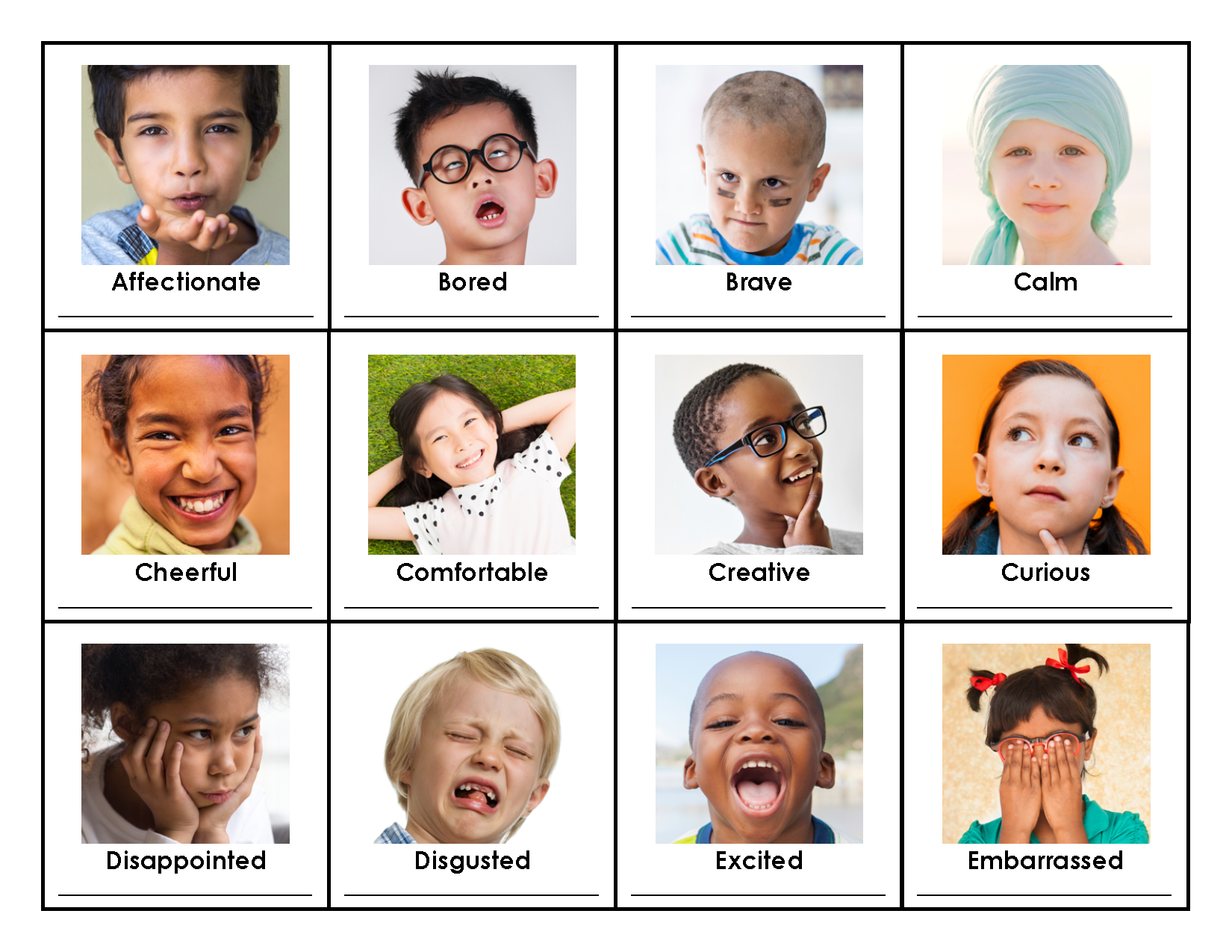
The Feeling Faces assist children with understanding their feelings and the feelings of others. It is important to teach children words to use to express feelings in replace of the use of challenging behavior. The feeling faces that follow can be used in a variety of ways to help children learn social emotional skills around use of emotional literacy and vocabulary.
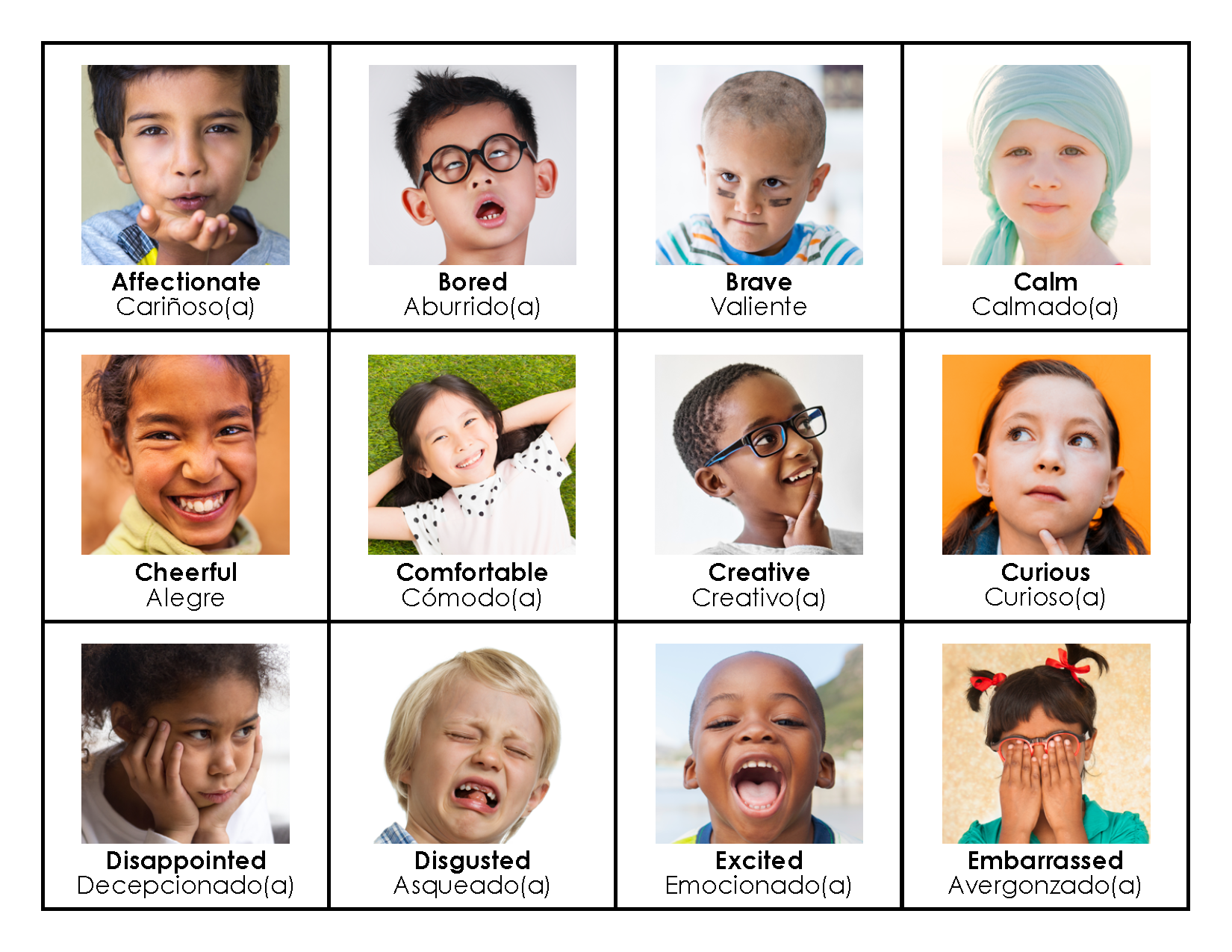
The Feeling Faces assist children with understanding their feelings and the feelings of others. It is important to teach children words to use to express feelings in replace of the use of challenging behavior. The feeling faces that follow can be used in a variety of ways to help children learn social emotional skills around use of emotional literacy and vocabulary.

The Feeling Faces assist children with understanding their feelings and the feelings of others. It is important to teach children words to use to express feelings in replace of the use of challenging behavior. The feeling faces that follow can be used in a variety of ways to help children learn social emotional skills around use of emotional literacy and vocabulary.
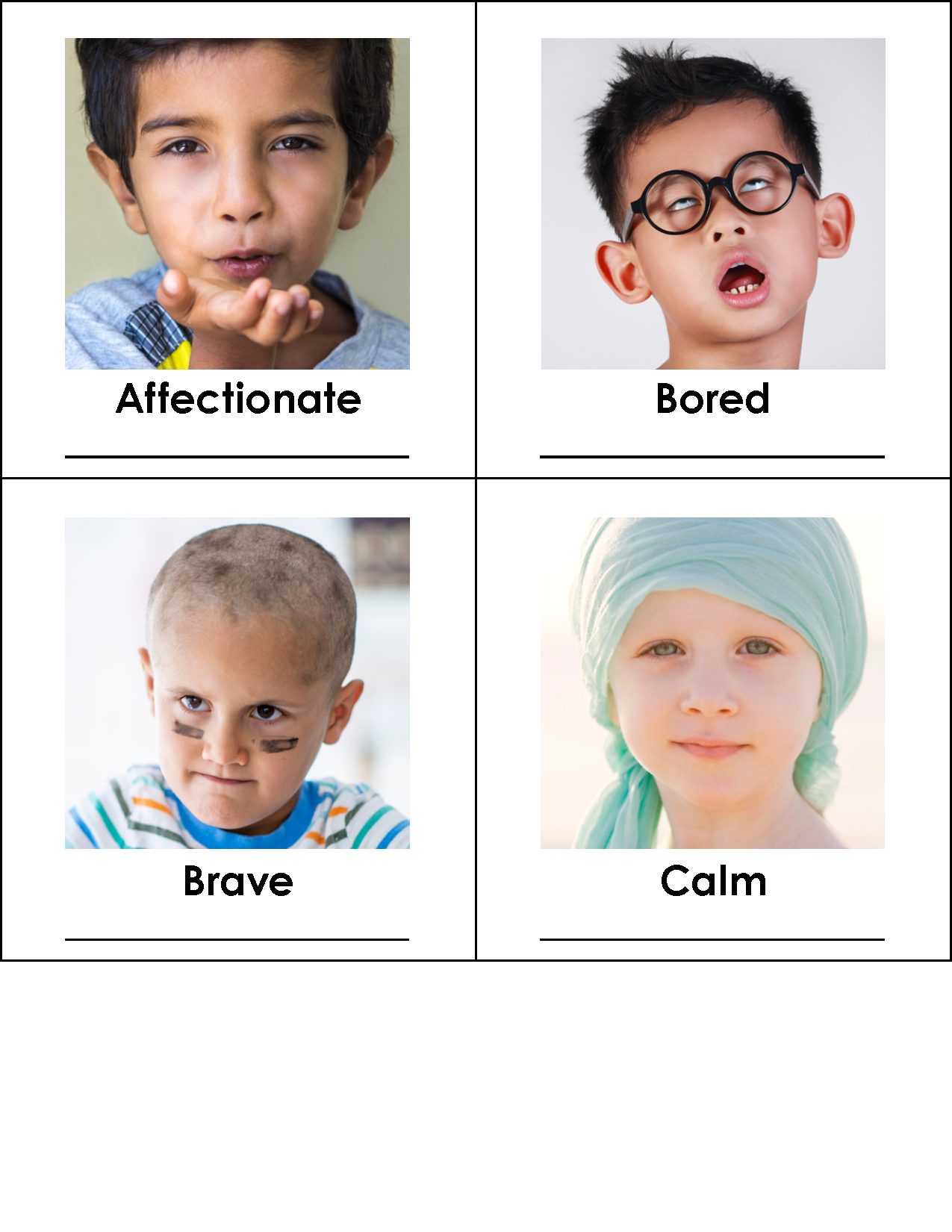
The Feeling Faces assist children with understanding their feelings and the feelings of others. It is important to teach children words to use to express feelings in replace of the use of challenging behavior. The feeling faces that follow can be used in a variety of ways to help children learn social emotional skills around use of emotional literacy and vocabulary.

The Feeling Faces assist children with understanding their feelings and the feelings of others. It is important to teach children words to use to express feelings in replace of the use of challenging behavior. The feeling faces that follow can be used in a variety of ways to help children learn social emotional skills around use of emotional literacy and vocabulary.

The Feeling Faces assist children with understanding their feelings and the feelings of others. It is important to teach children words to use to express feelings in replace of the use of challenging behavior. The feeling faces that follow can be used in a variety of ways to help children learn social emotional skills around use of emotional literacy and vocabulary.

Print and laminate these placemats for a fun way to embed emotional literacy practice at home or at school. Each mat provides a blank face paired with a feeling word and emoticon that children can use to model the feeling faces. Use the mats to make feeling faces out of play dough or other sand/clay material. Laminated mats can also be used with dry erase markers for easy wipe off when play is done.
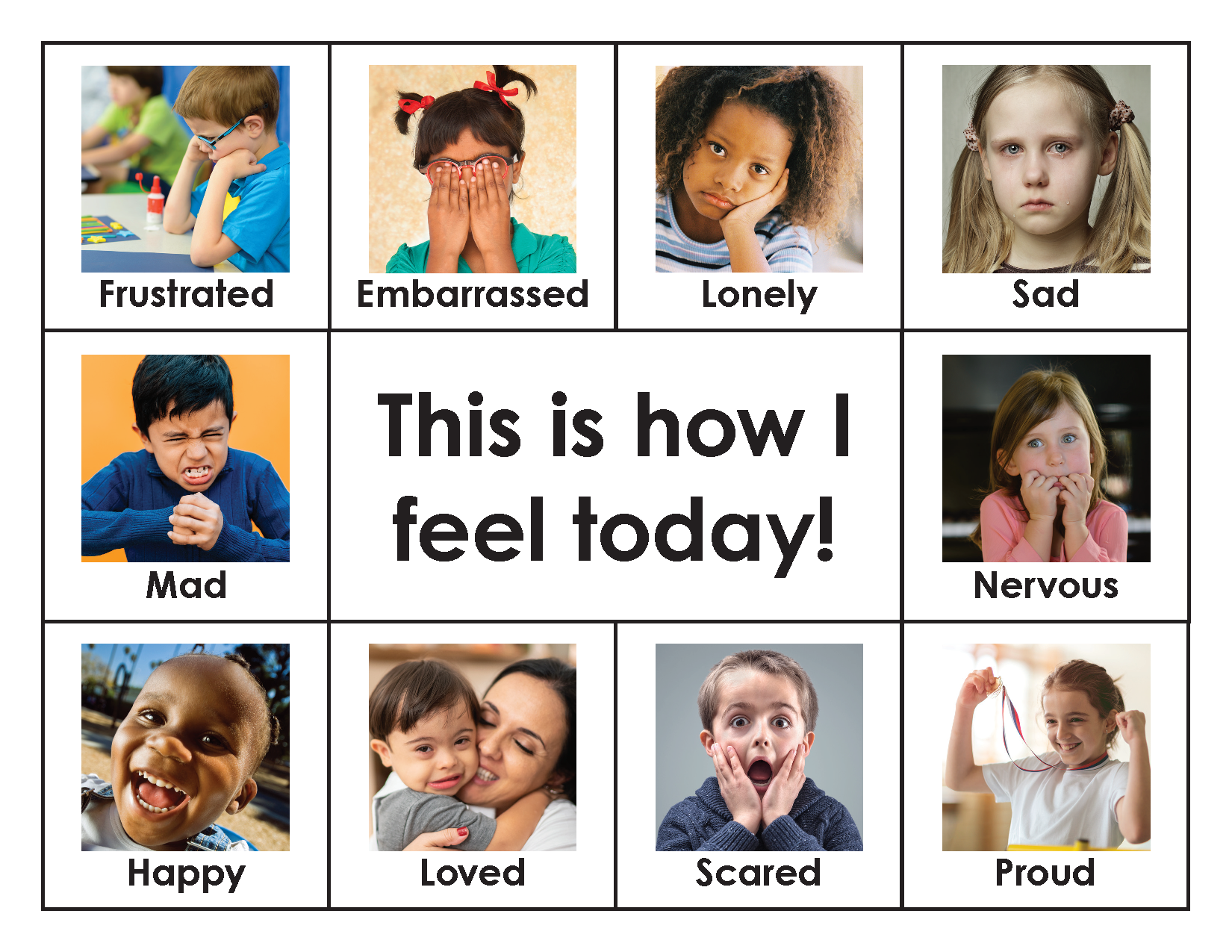
The Feeling Faces assist children with understanding their feelings and the feelings of others. It is important to teach children words to use to express feelings in replace of the use of challenging behavior. The feeling faces that follow can be used in a variety of ways to help children learn social emotional skills around use of emotional literacy and vocabulary.
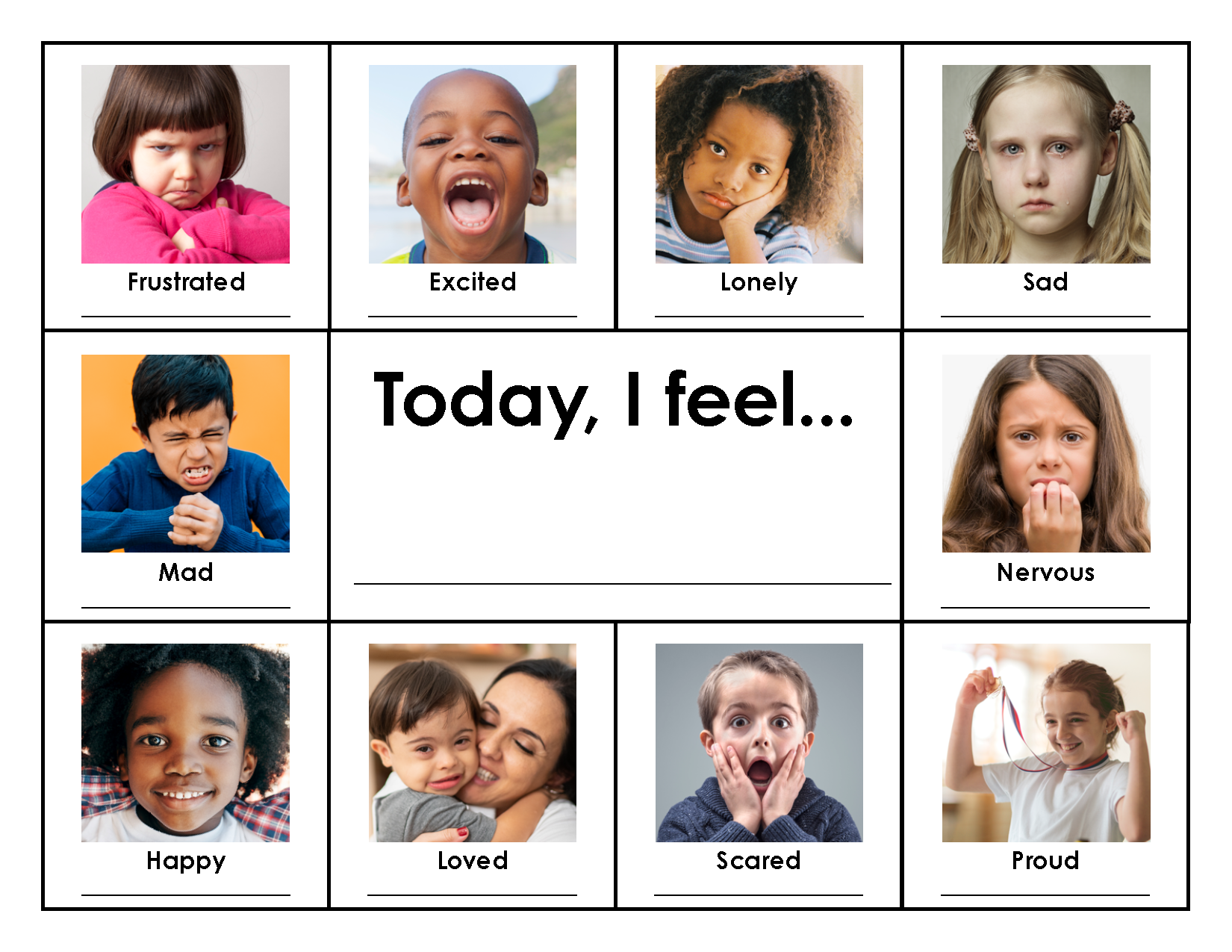
The Feeling Faces assist children with understanding their feelings and the feelings of others. It is important to teach children words to use to express feelings in replace of the use of challenging behavior. The feeling faces that follow can be used in a variety of ways to help children learn social emotional skills around use of emotional literacy and vocabulary.

The Feeling Faces assist children with understanding their feelings and the feelings of others. It is important to teach children words to use to express feelings in replace of the use of challenging behavior. The feeling faces that follow can be used in a variety of ways to help children learn social emotional skills around use of emotional literacy and vocabulary.

The Feeling Faces assist children with understanding their feelings and the feelings of others. It is important to teach children words to use to express feelings in replace of the use of challenging behavior. The feeling faces that follow can be used in a variety of ways to help children learn social emotional skills around use of emotional literacy and vocabulary.

The Feeling Faces assist children with understanding their feelings and the feelings of others. It is important to teach children words to use to express feelings in replace of the use of challenging behavior. The feeling faces that follow can be used in a variety of ways to help children learn social emotional skills around use of emotional literacy and vocabulary.
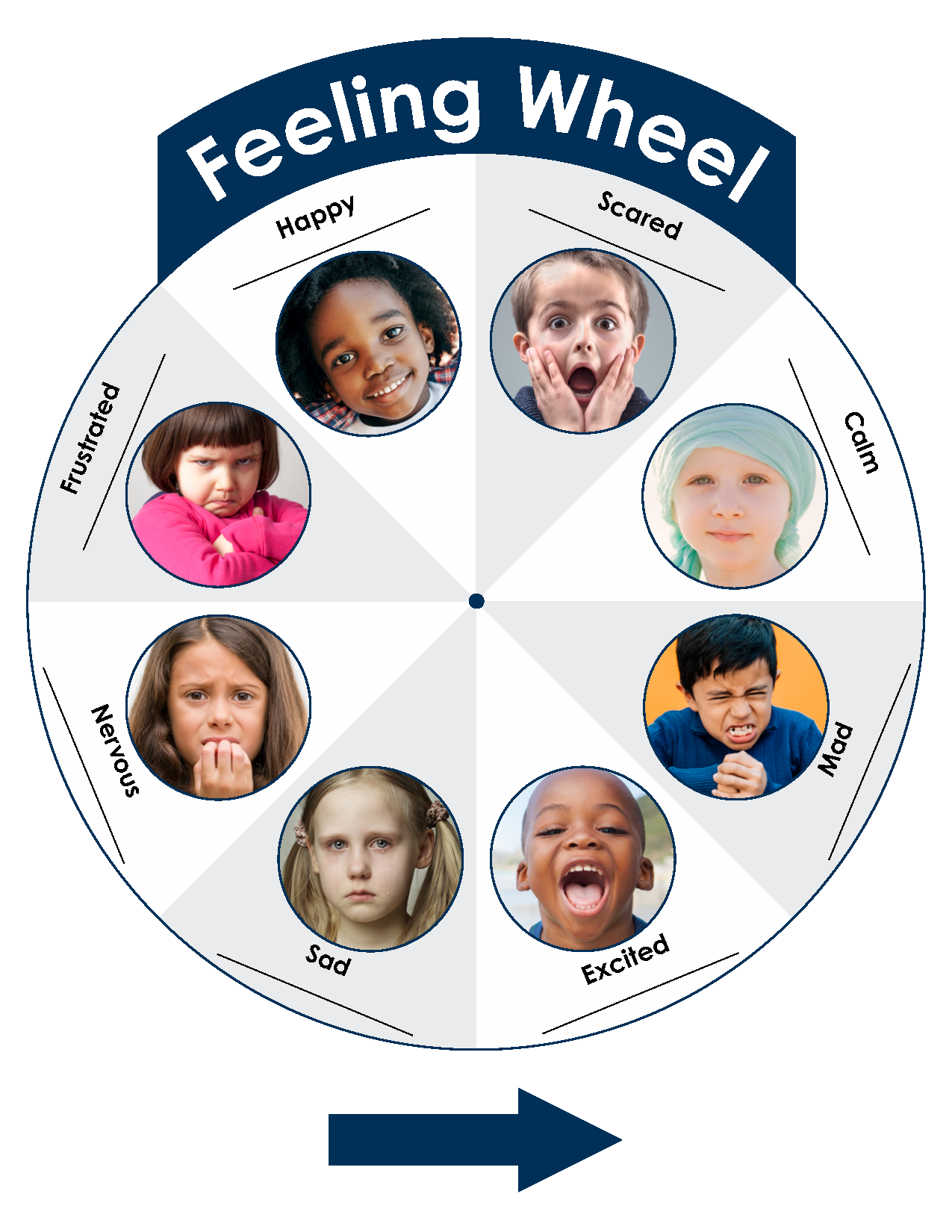
The Feeling Faces assist children with understanding their feelings and the feelings of others. It is important to teach children words to use to express feelings in replace of the use of challenging behavior. The feeling faces that follow can be used in a variety of ways to help children learn social emotional skills around use of emotional literacy and vocabulary.
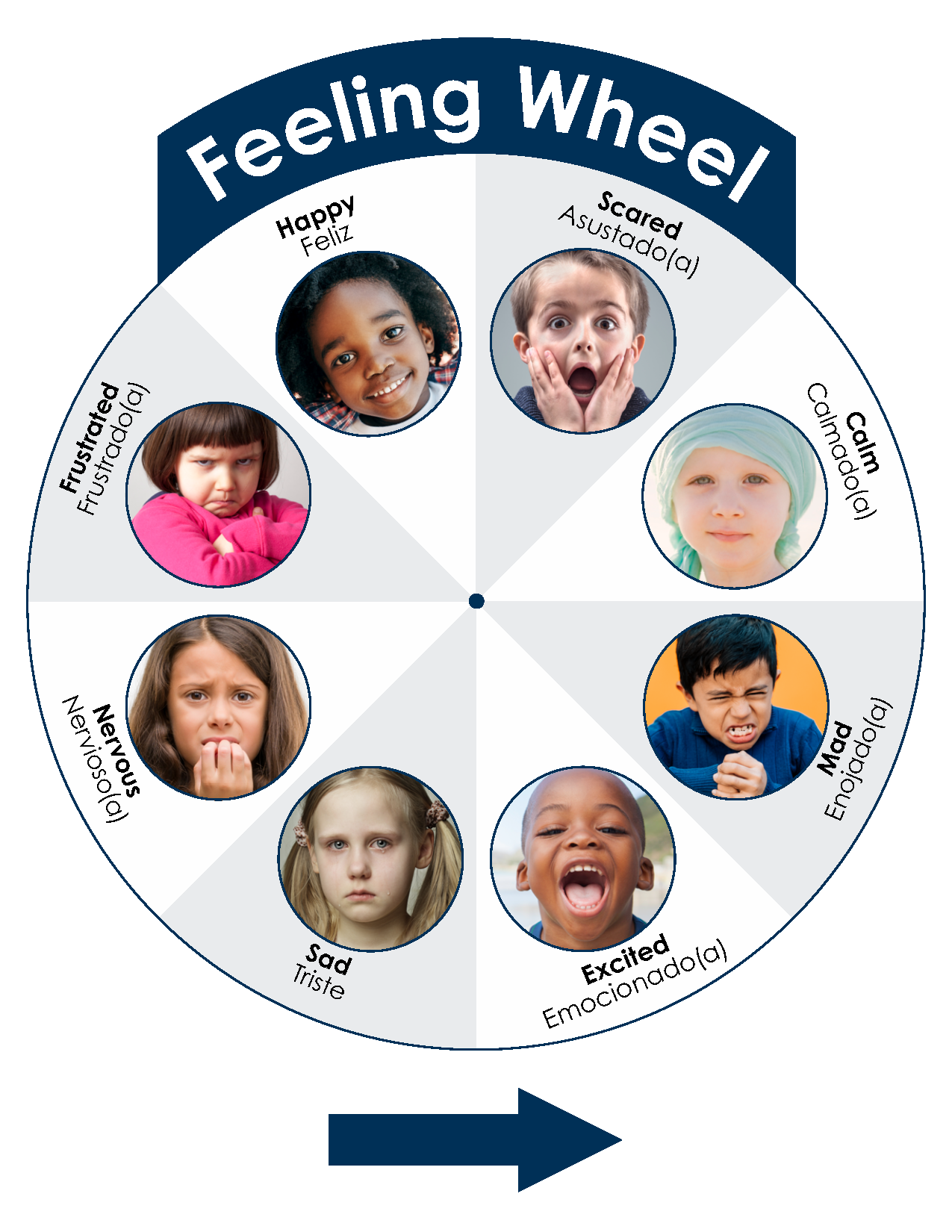
The Feeling Faces assist children with understanding their feelings and the feelings of others. It is important to teach children words to use to express feelings in replace of the use of challenging behavior. The feeling faces that follow can be used in a variety of ways to help children learn social emotional skills around use of emotional literacy and vocabulary.
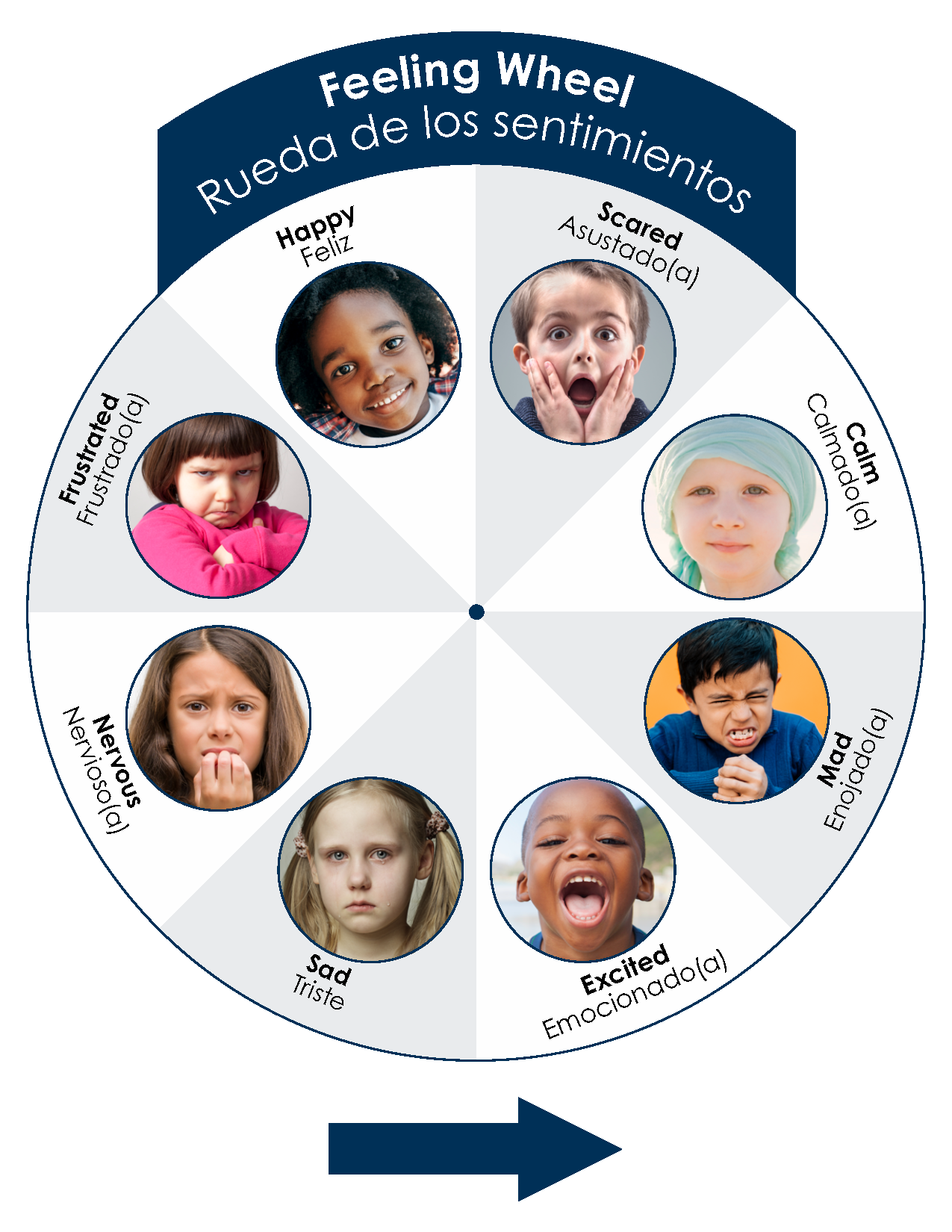
The Feeling Faces assist children with understanding their feelings and the feelings of others. It is important to teach children words to use to express feelings in replace of the use of challenging behavior. The feeling faces that follow can be used in a variety of ways to help children learn social emotional skills around use of emotional literacy and vocabulary. Includes introduction in Spanish and visual in English and Spanish.
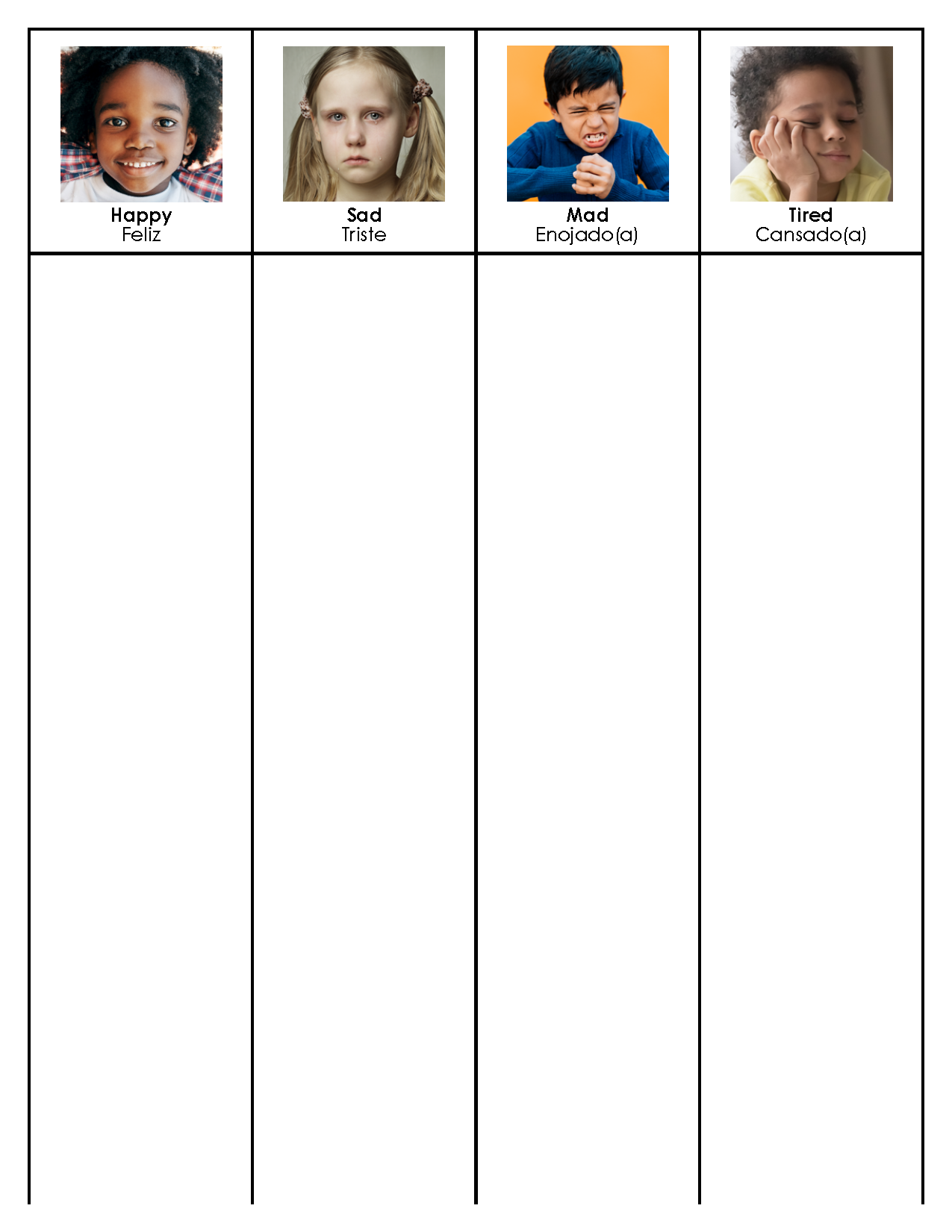
The Feeling Faces assist children with understanding their feelings and the feelings of others. It is important to teach children words to use to express feelings in replace of the use of challenging behavior. The feeling faces that follow can be used in a variety of ways to help children learn social emotional skills around use of emotional literacy and vocabulary.
The Home Strategies help link home and school. The questionnaire offers critical information about the child (see “Getting Started” section of this manual). The “Getting Ready for School” visual helps families with the morning routine and prepare for the transition to school. A scripted story is provided to help children with first time transitions to school. “Use Positive Words” offers families guidance for responding to problem behavior by emphasizing what to do versus what not to do.

materials to make for child support

Strategies and information to share with families

Scripted Stories for Social Situations help children understand social interactions, situations, expectations, social cues, the script of unfamiliar activities, and/or social rules.

Scripted Stories for Social Situations help children understand social interactions, situations, expectations, social cues, the script of unfamiliar activities, and/or social rules.

Scripted Stories for Social Situations help children understand social interactions, situations, expectations, social cues, the script of unfamiliar activities, and/or social rules.

Scripted Stories for Social Situations help children understand social interactions, situations, expectations, social cues, the script of unfamiliar activities, and/or social rules.

Scripted Stories for Social Situations help children understand social interactions, situations, expectations, social cues, the script of unfamiliar activities, and/or social rules.

Scripted Stories for Social Situations help children understand social interactions, situations, expectations, social cues, the script of unfamiliar activities, and/or social rules.

Checklist families can use to provide information about the child to the teacher
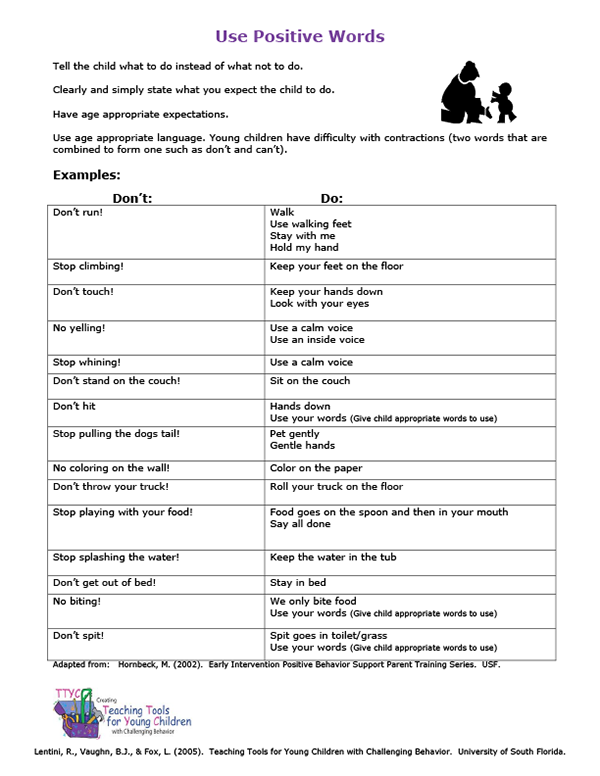
The “Supplemental Materials” folder contains folder labels and binder inserts, should you decide to print the contents of the Toolkits to construct your own kit. The labels and binder inserts provide you with a way to organize the materials.
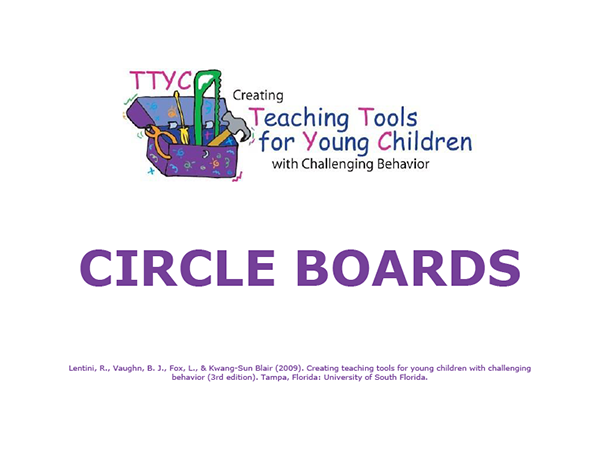

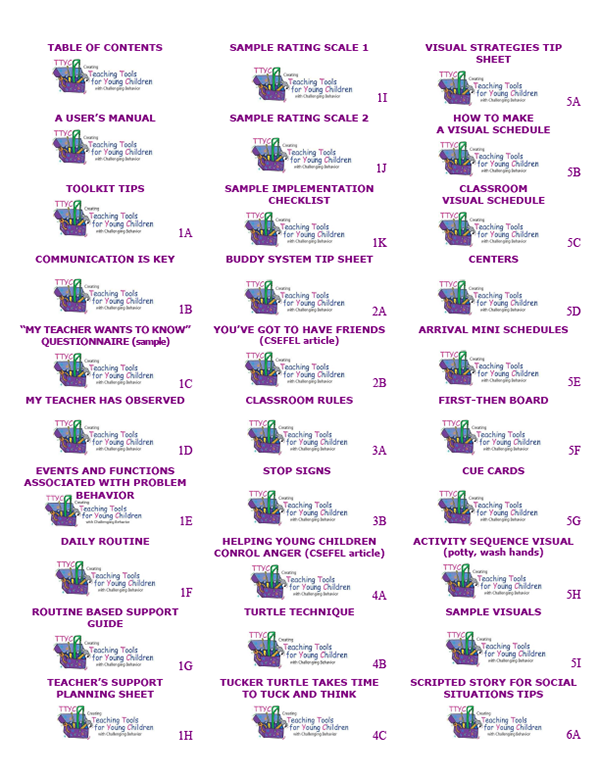


Share the Tools!
These materials were designed for reproduction and may be reproduced for educational purposes.
Learn More about our terms of use.
Recommended Citation for the Teaching Tools
Lentini, R., Vaughn, B. J., & Fox, L. (2008). Creating Teaching Tools for Young Children with Challenging Behavior [CD-ROM]. (Technical Assistance Center on Social Emotional Intervention, University of South Florida, 13301 Bruce B. Downs Tampa, FL 33612)




